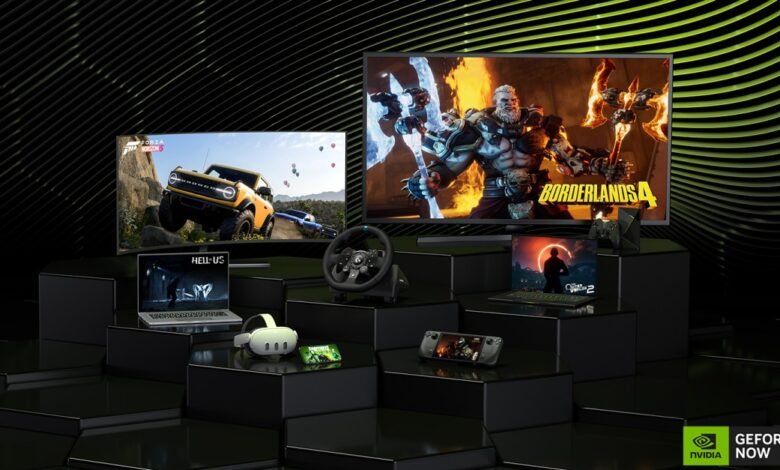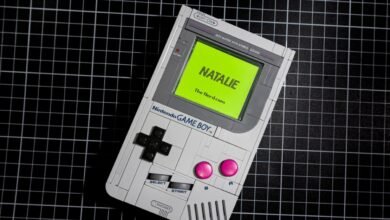Nvidia’s GeForce Now RTX 5080: Better and Worse Than Expected

▼ Summary
– Nvidia is upgrading its GeForce Now Ultimate cloud gaming service with RTX 5080 graphics, offering performance gains of 25-50% over previous RTX 4080 servers in select games.
– The service is adding an Install-to-Play feature that allows users to install unsupported games via Steam Cloud Play, though it currently adds only a limited number of titles.
– New features include a 360Hz mode for competitive gaming at 1080p and a 90Hz mode for the Steam Deck app, improving smoothness but with some resolution and performance limitations.
– While the RTX 5080 provides higher framerates, its benefits are limited by few supported games and the lag introduced by high frame generation in cloud gaming.
– The author experienced bugs during testing, such as login issues and streaming errors, but overall views the updates as significant improvements to an already strong service.
Nvidia has rolled out a significant update to its GeForce Now Ultimate cloud gaming service, introducing the RTX 5080 GPU for select titles alongside a host of other improvements. While the upgrade delivers tangible performance gains and expands game access through a new Install-to-Play feature, the experience isn’t without its limitations and quirks.
For those unfamiliar, GeForce Now streams games from remote servers equipped with high-end GPUs, allowing users to play demanding titles on devices that wouldn’t normally handle them. The service syncs with popular platforms like Steam, Epic, and Xbox, so you can access your existing library from the cloud. The $20 monthly Ultimate tier is the only one worth serious consideration, it’s the difference between crisp, high-fidelity gameplay and a compromised visual experience.
Performance-wise, the RTX 5080 shows clear improvements. In tests with Assassin’s Creed Shadows and Cyberpunk 2077, the new GPU delivered 25 to 50 percent higher frame rates at 4K resolution compared to the previous RTX 4080 servers. This allows for near-max settings in some titles, though achieving smooth performance often requires leaning on Nvidia’s DLSS frame generation tech. Enabling higher levels of artificial frame insertion, however, can introduce noticeable input lag, a trade-off that may not suit fast-paced games.
A major caveat is the limited selection of RTX 5080-enabled games at launch. There’s no easy way to identify which titles are using the new hardware until after you launch them. This inconsistency can be frustrating for users expecting a uniform upgrade across their library.
On the responsiveness front, Nvidia introduced a 360Hz mode aimed at competitive gamers. While it’s impressive for cloud streaming, it’s capped at 1080p and doesn’t deliver true monitor-level latency. Still, Nvidia claims end-to-end input latency as low as 30 milliseconds, which is a remarkable achievement for game streaming and often beats local console performance.
The new 90Hz support for Steam Deck improves smoothness on the OLED model’s display, though the RTX 5080 doesn’t always translate to higher frame rates in every scenario. In Expedition 33, for example, performance was nearly identical between the 4080 and 5080 at 1440p. Streaming at higher resolutions than the Deck’s native 800p is recommended for a cleaner image with fewer artifacts.
Perhaps the most anticipated addition is Install-to-Play, which lets users install any Steam game that supports Cloud Play, dramatically expanding the available catalog. Games install remarkably fast, often in under a minute, but the feature doesn’t yet fill all the gaps in GeForce Now’s supported titles. In one test, it added only 21 additional games from a library of over 470. Persistent storage is available for a fee, eliminating the need to reinstall each session, but the value will depend on how often you play less common titles.
During testing, several technical issues arose, including login errors, sync problems, and occasional black screens. These may be related to pre-launch server conditions, but they highlight that the platform is still evolving.
All in all, GeForce Now is better than ever, but the jump to RTX 5080 isn’t the revolution some might expect. The real value lies in the expanded game library and quality-of-life improvements, even if they come with a few rough edges.
(Source: The Verge)




